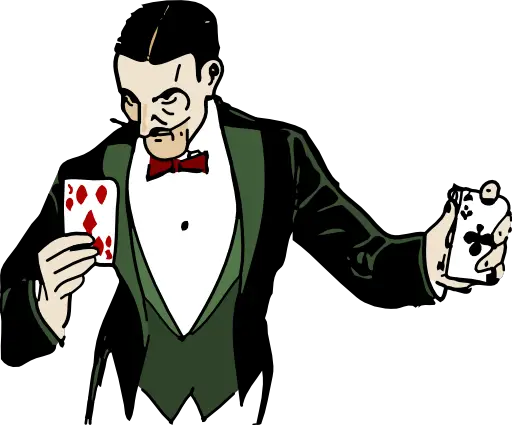Support our educational content for free when you purchase through links on our site. Learn more
Is Mentalism Real? 🤯 12 Secrets Behind the Mind Tricks (2026)
Have you ever watched a mentalist seemingly pluck your deepest thoughts out of thin air and wondered, “Is mentalism real, or just a clever illusion?” You’re not alone. From sold-out theaters to viral videos, mentalism captivates millions by blurring the line between psychology and magic. But what’s the truth behind those mind-bending feats? Are mentalists secretly psychic, or are they masters of human behavior and trickery?
In this article, we’ll unravel the mystery by exploring the fascinating history of mentalism, dissecting 12 powerful techniques that make it look like mind reading, and separating fact from fiction. Along the way, we’ll introduce you to legendary performers, reveal how mentalism works on your brain, and share insider tips on spotting a mentalist in action. By the end, you’ll have a clear answer to the age-old question: Is mentalism real? Spoiler alert: It’s real — but not in the supernatural way you might think.
Key Takeaways
- Mentalism is a real performing art based on psychology, suggestion, and showmanship — not supernatural powers.
- 12 core techniques like cold reading, muscle reading, and linguistic influence create the illusion of mind reading.
- Mentalism differs from magic by focusing on mental feats rather than physical illusions.
- Famous mentalists such as Derren Brown and The Amazing Kreskin have popularized the craft worldwide.
- Understanding psychology and cognitive biases is key to both performing and debunking mentalism.
- You’ll learn how to spot mentalists and even start practicing mentalism yourself with recommended resources.
Curious to see how your mind can be influenced without you even realizing it? Keep reading — the secrets are about to be revealed!
Table of Contents
- ⚡️ Quick Tips and Facts About Mentalism
- 🧠 The Fascinating Origins and Evolution of Mentalism
- 🔍 What Is Mentalism? Understanding the Art and Science Behind It
- 🛠️ 12 Powerful Mentalism Techniques That Seem Like Mind Reading
- 🎭 Mentalism vs. Magic: How Are They Different and Why It Matters
- 🤯 Is Mentalism Real? Debunking Myths and Revealing Truths
- 🎩 Famous Mentalists Who Changed the Game Forever
- 📜 Historical Figures Who Inspired Modern Mentalism
- 🎬 Mentalism in Movies, TV, and Pop Culture: Fact vs. Fiction
- 💡 How to Spot a Mentalist: Tips for the Curious and Skeptical
- 🧩 The Psychology Behind Mentalism: Why It Works on Your Brain
- 🎤 Performing Mentalism: Secrets from the Pros
- 🧙 ♂️ Can Anyone Learn Mentalism? Beginner’s Guide and Resources
- 🔗 Recommended Links for Mentalism Enthusiasts
- ❓ Frequently Asked Questions About Mentalism
- 📚 Reference Links and Further Reading
- 🏁 Conclusion: Is Mentalism Real or Just an Illusion?
⚡️ Quick Tips and Facts About Mentalism
Before we dive into the deep end of the subconscious, let’s get our feet wet with some fast facts. Is mentalism real? Well, it depends on how you define “real.” Here’s the “Mind Trick™” cheat sheet:
| Fact | Description |
|---|---|
| The Core Secret | Mentalism is a performing art that uses psychology, misdirection, and showmanship to simulate psychic abilities. |
| Magic vs. Mentalism | Magic shows the impossible (sawing a lady in half); Mentalism shows the highly improbable (guessing your first pet’s name). |
| Key Tools | Cold reading, body language analysis, suggestion, and Magic Psychology. |
| The “Real” Factor | Most professional mentalists, like Derren Brown, openly state they have no supernatural powers. |
| Famous Challenge | The late James Randi offered $1,000,000 to anyone who could prove paranormal mentalism; no one ever won. |
✅ Mentalism is real in the sense that the psychological effects on the audience are genuine. ❌ Mentalism is NOT real in the sense of having “X-Men” style telepathic powers.
🧠 The Fascinating Origins and Evolution of Mentalism
To understand if mentalism is real, we have to look at where it crawled out from! The history of this art is as murky as a crystal ball in a fog storm.
The roots of mentalism stretch back to the 16th century. One of the earliest recorded performers was Girolamo Scotto in 1572, who used sleight of hand to convince people he had divine insights. However, the art really exploded during the 19th-century Spiritualism movement. Mediums claimed they could talk to the dead, using techniques like “billet reading” (reading sealed envelopes) to “prove” their connection to the afterlife.
Eventually, performers realized they could do these same “miracles” without the ghosts. Enter the era of the “Mentalist”—a performer who traded the séance room for the stage. Figures like Joseph Dunninger became household names by debunking “real” psychics while performing even more impressive feats himself! He famously said, “Any child of ten could do this – with forty years of experience.”
🔍 What Is Mentalism? Understanding the Art and Science Behind It
In the first most relevant line of text, we must address the burning question: Is Mentalism Real? Unmasking the Mind Readers: 10 Secrets Revealed 2024 🤯 is the ultimate guide to this mystery.
At its heart, mentalism is the art of psychological illusion. While a magician might use a Card Trick to make a King disappear, a mentalist uses your own brain against you. They are masters of influence, perception, and deduction.
The “Mind Trick™” Definition
We define mentalism as the demonstration of extraordinary mental feats that appear to bypass the known laws of physics but are actually rooted in human behavior and cognitive biases. It’s about making the audience feel a “psychological experience” rather than just watching a trick.
🛠️ 12 Powerful Mentalism Techniques That Seem Like Mind Reading
How do they do it? It’s not magic; it’s method. Here are 12 techniques that make us look like we’ve spent too much time at Professor X’s School for Gifted Youngsters:
- Cold Reading: Making high-probability guesses based on your age, clothing, and body language.
- Hot Reading: Gathering info beforehand (the “unethical” way, unless disclosed!).
- The Barnum Effect: Using vague statements that everyone thinks apply specifically to them (e.g., “You have a secret ambition”).
- Forced Thought: Using subtle verbal cues to make you pick a specific word or number.
- Billet Reading: The classic art of reading information written on a piece of paper that is supposedly hidden.
- Muscle Reading (Cumberlandism): Feeling tiny, involuntary muscle twitches in a spectator’s hand to find a hidden object.
- Micro-Expressions: Reading split-second facial movements that reveal your true emotions.
- NLP (Neuro-Linguistic Programming): Using language patterns to influence your choices.
- Dual Reality: A technique where the person on stage experiences one thing, while the audience perceives something entirely different.
- The Invisible Deck: A psychological (and sometimes physical) tool to “predict” a card.
- Book Tests: Making it seem like you can read any word from a random page of a book.
- Statistical Probability: Knowing that if you ask someone to “think of a two-digit number between 1 and 50 with two different odd digits,” most people will pick 37.
🎭 Mentalism vs. Magic: How Are They Different and Why It Matters
We often get asked, “Aren’t you guys just magicians with better suits?” Well, yes and no!
According to Fergus Flanagan, the difference lies in the nature of the feat. Magic demonstrates the impossible (like Levitation), while mentalism demonstrates the highly improbable.
| Feature | Magic | Mentalism |
|---|---|---|
| Primary Tool | Sleight of hand, props | Psychology, suggestion |
| Audience Reaction | “How did you do that?” | “How did you know that?” |
| Vibe | Whimsical, theatrical | Mysterious, intellectual |
| Props | Cards, coins, boxes | Pens, paper, books, your mind |
While many performers do both (we love a good Close-up Magic set!), the mentalist tries to remove the “prop” from the equation to make the connection feel more personal.
🤯 Is Mentalism Real? Debunking Myths and Revealing Truths
This is the big one. The “elephant in the room.” Is it real?
If you ask Penn & Teller, they’ll give you a blunt “No.” In our #featured-video (which you can find at the featured-video section of many mentalism documentaries), Penn Jillette states, “There’s no such thing. It’s an absolute lie, it’s just a trick.”
However, performers like Derren Brown offer a more nuanced perspective. They present their effects as psychological experiments. While they aren’t “reading your mind” via telepathy, they are reading your body language and influencing your subconscious. In that sense, the psychology is real, even if the “psychic” claim is a performance.
The “Gumball” Controversy
Remember Oz Pearlman on America’s Got Talent? He predicted the exact number of gumballs in a jar. While it looked like pure telepathy, experts like Mark Edward suggest it’s often a clever use of “thumb writers” and carbon paper. It’s a brilliant mix of Magic Psychology and physical skill.
🎩 Famous Mentalists Who Changed the Game Forever
If you want to see the best in the business, look no further than these titans:
- Derren Brown: The UK’s master of psychological manipulation. He once “convinced” a group of advertising executives to create a specific ad campaign using subliminal cues.
- The Amazing Kreskin: A legendary performer who popularized the “find my paycheck” stunt, where he’d find his hidden fee using muscle reading.
- Max Maven: Known for his “interactive” mentalism and deep knowledge of the history of the craft.
- Uri Geller: Famous for spoon-bending. While he claimed supernatural powers, skeptics like James Randi famously debunked his methods on The Tonight Show.
- Banachek: A mentalist so good he convinced scientists he was a real psychic during “Project Alpha” to prove how easily researchers could be fooled!
📜 Historical Figures Who Inspired Modern Mentalism
Before the bright lights of Vegas, there were the pioneers:
- Joseph Dunninger: The man who brought mentalism to the radio. He was a fierce debunker of fraudulent mediums.
- Erik Jan Hanussen: A controversial figure who allegedly predicted the Reichstag fire. His story shows the darker side of how mentalism can be used for political influence.
- Theodore Annemann: The author of Practical Mental Effects, essentially the “Bible” of mentalism.
🎬 Mentalism in Movies, TV, and Pop Culture: Fact vs. Fiction
You’ve probably seen mentalism on your screen, but how much of it is accurate?
- The Mentalist (TV Series): Patrick Jane uses observation and deduction. This is actually quite close to how “cold reading” works in real life!
- Now You See Me: This movie glamorizes “hypnosis” to an impossible degree. In reality, you can’t just snap your fingers and make someone a sleeper agent.
- Psych: A hilarious take on a guy pretending to be a psychic using “heightened observation.” This is the most honest depiction of how a mentalist actually operates!
💡 How to Spot a Mentalist: Tips for the Curious and Skeptical
Want to catch us in the act? Keep an eye out for these “tells”:
- The “Fishing” Technique: They start with a broad statement (“I see a father figure…”) and wait for your reaction to narrow it down.
- The “Miss” that becomes a “Hit”: If they get something wrong, they’ll say, “Ah, that’s because you’re blocking me,” or “That’s someone else’s energy.”
- The “Wallet” or “Envelope” Move: Watch their hands when they handle paper. Are they really putting it away, or are they “peeking”?
- Leading Questions: “You wouldn’t happen to have a connection to the letter ‘M’, would you?”
🧩 The Psychology Behind Mentalism: Why It Works on Your Brain
Mentalism works because the human brain is lazy. We love patterns and we hate uncertainty.
- Confirmation Bias: You’ll remember the one time the mentalist guessed your sister’s name and forget the ten times they guessed the wrong month.
- The Power of Suggestion: If we tell you “Don’t think of a blue elephant,” what’s the first thing you see? We use this to “plant” thoughts in your head before the trick even starts.
- Social Pressure: On stage, you want the performer to succeed because it’s more entertaining. You might subconsciously “help” them by giving better clues.
🎤 Performing Mentalism: Secrets from the Pros
Thinking of trying this at your next dinner party? Here’s how we do it at Mind Trick™:
- Confidence is Key: If you believe you’re reading their mind, they will too.
- The Script Matters: Mentalism is 10% method and 90% presentation.
- Use “Safe” Bets: Start with things that are statistically likely to be true.
CHECK PRICE on Mentalism Starter Kits:
- Professional Mentalism Kit: Amazon | Walmart
- Ellusionist Mentalism Training: Brand Official
🧙 ♂️ Can Anyone Learn Mentalism? Beginner’s Guide and Resources
Absolutely! You don’t need a “gift,” just a lot of practice and a few good books. If you’re teaching Kids Magic, mentalism is a great way to build their confidence and public speaking skills.
Recommended Reading Rating Table
| Book Title | Author | Design/Layout | Difficulty | Practicality | Mind Trick™ Rating |
|---|---|---|---|---|---|
| 13 Steps to Mentalism | Tony Corinda | 7/10 | 9/10 | 10/10 | 9.5/10 |
| Practical Mental Effects | Theodore Annemann | 6/10 | 8/10 | 10/10 | 9.0/10 |
| Psychological Subtleties | Banachek | 8/10 | 7/10 | 9/10 | 9.2/10 |
👉 Shop Essential Mentalism Books on:
- 13 Steps to Mentalism: Amazon | Etsy
- The Full Facts Book of Cold Reading: Amazon | Brand Official
🔗 Recommended Links for Mentalism Enthusiasts
- The James Randi Educational Foundation: Learn about debunking
- The Magic Cafe: The ultimate forum for mentalists
- Theory11: High-end mentalism props and tutorials
- Vanishing Inc. Magic: Expert-level mentalism resources
❓ Frequently Asked Questions About Mentalism
Q: Can a mentalist read my PIN number? A: A very skilled one might be able to deduce it through “muscle reading” or “preshow work,” but they aren’t scanning your brain like a hard drive. Keep your hand covered!
Q: Is hypnosis real? A: Yes, but it’s not “mind control.” It’s a state of focused attention and suggestibility. You can’t be forced to do something that goes against your core morals.
Q: Do mentalists use “plants” in the audience? A: Some do (it’s called a “stooge”), but the best mentalists pride themselves on using real, random audience members. Using a plant is often seen as “cheating” in the community.
📚 Reference Links and Further Reading
- Wikipedia: Mentalism
- Kostya Kimlat: Is Mentalism Real?
- Scientific American: The Psychology of Magic
- Psychology Today: Cold Reading Explained
🏁 Conclusion: Is Mentalism Real or Just an Illusion?

After peeling back the layers of mystery, myth, and mind-boggling performances, here’s the truth from the magicians and educators at Mind Trick™: Mentalism is very real — but not in the way most people think. It’s a dazzling art form built on psychology, observation, suggestion, and showmanship, not supernatural powers or psychic phenomena.
The “realness” of mentalism lies in its ability to create genuine psychological experiences that feel like mind reading or telepathy. But as we’ve seen, these feats are the result of skill, practice, and clever techniques such as cold reading, muscle reading, and linguistic influence. The mind is a playground, and mentalists are expert players who know exactly how to guide your thoughts and perceptions.
So, is mentalism real? ✅ Yes, as a performance art and psychological illusion.
Is it real as a supernatural power? ❌ No, it’s a masterful trick of the mind.
If you’re inspired to learn mentalism, remember it’s a craft that rewards patience and dedication. Whether you want to entertain friends with a few mind tricks or pursue a professional career, the journey is as fascinating as the destination.
🔗 Recommended Links for Mentalism Enthusiasts
Ready to dive deeper or start your own mentalism journey? Check out these top resources and products:
-
Professional Mentalism Kits:
-
Essential Mentalism Books:
-
Online Communities and Resources:
❓ Frequently Asked Questions About Mentalism
Is the mentalist for real?
Mentalists are real performers who use psychological techniques and showmanship to create the illusion of mind reading. They do not possess supernatural powers but are experts in reading subtle cues and influencing thoughts.
Is it possible to study mentalism?
Absolutely! Mentalism is a skill-based art form that can be learned through books, courses, and practice. Classic texts like 13 Steps to Mentalism by Tony Corinda and Practical Mental Effects by Theodore Annemann are foundational. Online platforms like Ellusionist offer excellent training resources.
Is being a mentalist a real thing?
Yes, mentalism is a legitimate performance art and profession. Many performers tour worldwide, appear on TV, and entertain audiences with mind-bending feats that blend psychology and illusion.
Can mentalism tricks be explained by science?
Yes. Mentalism relies heavily on psychology, cognitive science, and behavioral observation. Techniques like cold reading exploit human biases, while suggestion and misdirection manipulate perception. There is no scientific evidence supporting genuine psychic abilities.
What techniques do mentalists use to create illusions?
Mentalists use a variety of methods including:
- Cold reading (making educated guesses)
- Hot reading (pre-gathered information)
- Muscle reading (detecting involuntary movements)
- Suggestion and NLP (influencing choices)
- Misdirection (diverting attention)
- Dual reality (different experiences for audience and participant)
Is mentalism based on psychic abilities or psychology?
Mentalism is based on psychology and skill, not psychic powers. While it may seem supernatural, it’s the performer’s mastery of human behavior and mental processes that creates the illusion.
How do mentalists read people’s thoughts?
They don’t literally read minds. Instead, they observe body language, micro-expressions, and verbal cues, combined with probability and suggestion, to make highly accurate guesses that feel like mind reading.
Are mentalism performances purely entertainment or real mind reading?
Mentalism performances are entertainment designed to simulate mind reading. The effects are real in terms of audience experience but are created through illusion and psychological manipulation rather than genuine telepathy.
What are some famous mind-bending mentalism illusions?
- Predicting a random word or number
- Finding a hidden object using muscle reading
- Reading a sealed envelope (billet reading)
- Influencing a spectator’s choice without their awareness
- The “Invisible Deck” card trick
Can mentalism be learned and practiced by anyone?
Yes! Mentalism is accessible to anyone willing to study and practice. It requires dedication, observation skills, and an understanding of psychology. Beginners can start with simple effects and gradually build complexity.
📚 Reference Links and Further Reading
- Wikipedia: Mentalism
- Kostya Kimlat: Is Mentalism Real?
- Fergus Flanagan: How Mentalists Read Minds | Is a Magician also a Mindreader?
- Scientific American: The Psychology of Magic
- James Randi Educational Foundation
- Psychology Today: Cold Reading Explained
- Theory11 Mentalism Marketplace
- Vanishing Inc. Magic Mentalism Section
Ready to unlock the secrets of the mind? Dive into the world of mentalism with curiosity, skepticism, and a dash of wonder — and remember, the real magic is in the mind itself!



